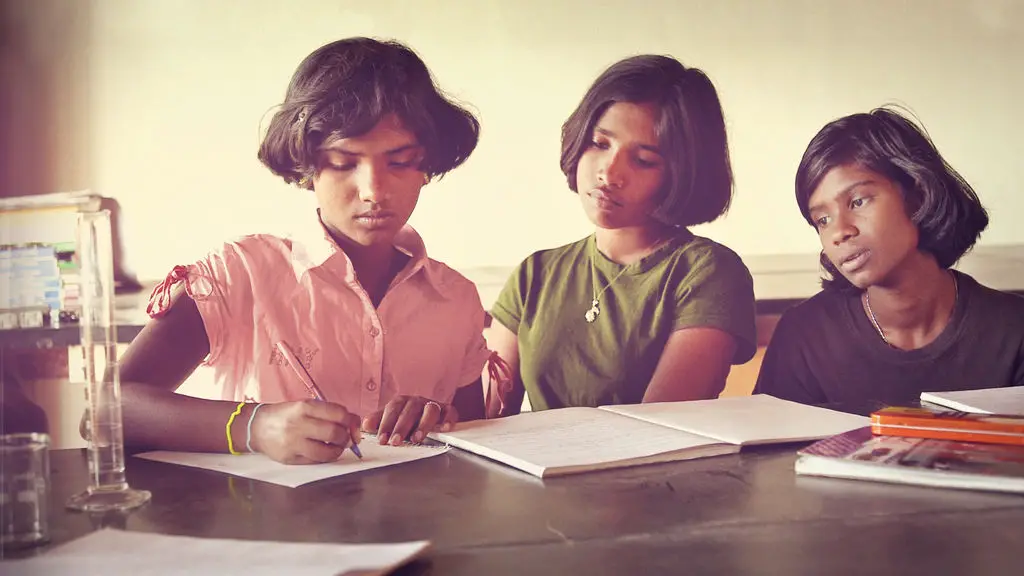If you’re looking to add some new content to your Netflix watch list (and finally stop re-watching “The Office”), then I have a series for you. It’s a documentary series, and may be one of the most impactful things you’ll ever watch on the streaming service.
On July 28, Netflix released a documentary series called “Daughters of Destiny.” Directed by Academy Award winning director Vanessa Roth, the docuseries shares the story of Shanti Bhavan, a school in Bangalore, India. Shanti Bhavan, however, isn’t a typical, government school in India.
Since 1997, the boarding school has taken in students at the age of four, and as its founder Dr. Abraham George insists, it pays for the students’ education, housing, food and other needs until after they graduate from college and attain a career. Oh, and one other thing—all of the students attending Shanti Bhavan are part of the “untouchables” caste, the dalit.
Like its name suggests, “Daughters of Destiny” follows the stories of five girls and documents their experiences both in and out of Shanti Bhavan for nearly seven years. Over the course of four episodes, the docuseries does an incredible job of relaying to viewers the pain and discrimination that these girls face in their everyday lives. At the same time, the audience grows attached to each girl, as we see them grow up before our eyes.
Dr. George’s mission was simple: Give a solid education to kids who live in abject poverty, so that they, in turn, learn to live lives to lift others out of poverty. Not only do these girls get formal, thorough educations, but they learn to look beyond their castes and gender.
Since India is home to more than 1.3 billion people, the decisions of its government affect a lot of lives. “Daughters of Destiny” explains that, while the caste system had been formally dissolved in 1950, this hierarchical form of outright discrimination is still practiced in rural areas of the second-most populous nation in the world.
The docuseries takes viewers to these areas of India where caste prejudice is still prevalent. When she visits home, one of the girls, Thenmozhi, spends her days assembling matchboxes for hours on end with each of her family members. Another girl’s mother works at a rock quarry, bent over all day making extremely minimal wages. The docuseries does an excellent job of showing the audiences these brutal environments, and showcasing the love and respect the girls have for their families.
As girls in the “untouchable” class, viewers literally see people in their community question the girls’ family’s decisions to send them to school, thinking that the only thing women are good for is rearing children. One girl’s family kept trying to set her up with her uncle (and only after she graduated high school did they give up on that idea).
“Daughters of Destiny” does more than share the story of a rather amazing school. The docuseries also shows viewers that, despite the leaps and bounds our society has made in progress, there is still a lot of discrimination in some parts of the world, and that education is the key to breaking through. It’s truly incredible to see the power of education in the girls’ lives and how each found their calling during their time studying at Shanti Bhavan. It’s a male-dominated society that they live in, but Dr. George’s life work helps girls (who are even lower-class citizens) break out of this cycle of enslavement.
The school’s decision was a tough one—give all the children in a family access to Shanti Bhavan’s resources or only one student per family. Dr. George chose the latter, reasoning that if one person per family received the education that Shanti Bhavan offers, a greater scope of people would be affected as a result, with the end goal of propelling more change and progress in India. Even though one student would reap the benefits, they would be able to pull their family out of poverty by the time they enter the workforce.
Dr. George builds relationships with these kids, acting as a father figure to many students. He advises the students in the academic facets of their lives, as well as their social and family lives. As he knows their family histories, he helps guide the students and forge them into leaders (while taking into account the parents’ needs as well—which includes convincing them that giving their teenaged daughters an education is better than marrying them off).
Viewers also see some of the pushback from the girls as they want to pursue particular dreams. One of the girls the docuseries follows, Preetha, has a dream of becoming a singer, but Dr. George guides her to pursue other career paths. This conflict of interest, however, is seen as the only form of “payment” for the students’ time at Shanti Bhavan. As the school does so much for their children, all they ask in return is for the students to give back to their communities in meaningful ways.
There’s a multiplicative essence about Shanti Bhavan. As one student becomes a leader in their community, they have the power to impact many others, regardless of what caste they came from. Shanti Bhavan gives students hope when they otherwise wouldn’t have had any, and the school hasn’t been without hardship. He literally gave everything he had; he spends most of his time at the school, and almost went bankrupt, but it was the families of the students that gave him hope. He didn’t choose to settle in a comfortable life, but instead chose to address an issue that people would otherwise try to ignore—the caste system. The school teaches the lowliest of society their inherent value, and through education, Shanti Bhavan proves that every person can rise to the top, regardless of where they came from.
“Daughters of Destiny,” in the end, is more than just a binge-worthy documentary; it’s the story of a man’s love for his homeland, and how his life’s work has, rather literally, changed so many people’s lives as a result. It’s a call to action, and a poignant message to viewers about every person’s purpose.

















